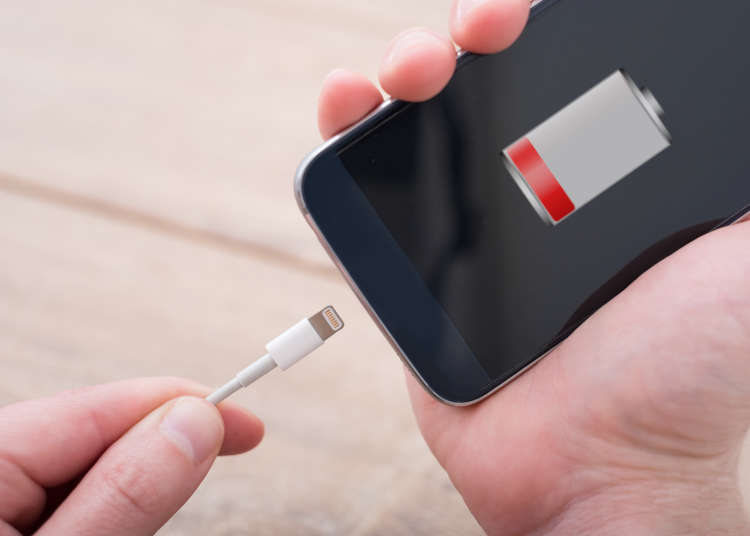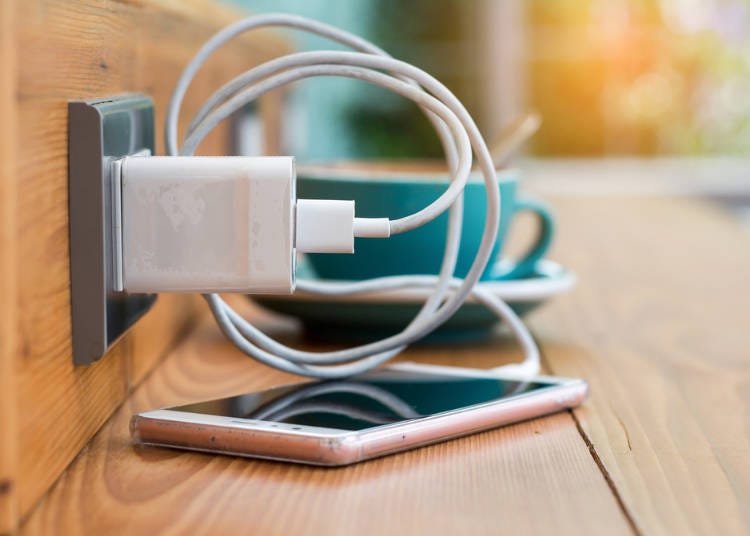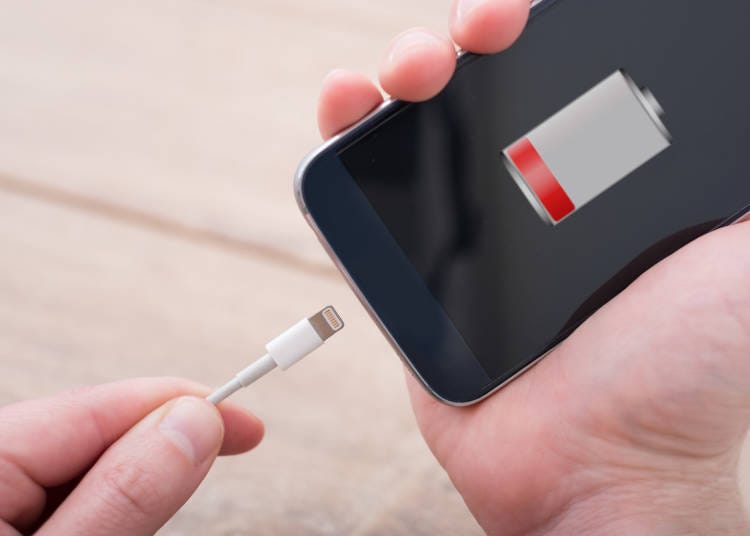
One item that is essential when traveling is a mobile device such as a smartphone or tablet. Equipped with such you can always get lots of information at any time wherever you are. But what would you do if you encountered a disaster while traveling in Japan and were unable to use that device? Having no access to information would be a serious matter. This is why it is important to know in advance where there are electrical outlets that can be used in emergencies.
In this article we will explain what services are available to foreigners visiting Japan including places where there are electrical outlets that can be used in emergencies.
Emergency power sources during disasters in Japan

Japan is a country often beset by natural disasters. Would you panic if the battery in your smartphone or tablet ran out of power? We will tell you about to what extent Japan has made efforts to secure emergency power sources for use in the event of a disaster.
Since 2018 areas that serve as gateways to foreign tourists entering the country, such as airports, and transportation related areas, such as Shinkansen stations, as well as major tourist information centers designated by the Japan National Tourism Organization (JNTO) have been prioritized in being equipped with emergency power sources under government policy. These are places easily recognizable by foreign tourists and are areas where smartphones and tablets can be recharged.
For foreign tourist information centers certified by the Japan National Tourism Organization (JNTO), go to JNTO https://tic.jnto.go.jp/ (Japanese, English, Korean, Simplified Chinese, Traditional) or contact the Japan Visitor Hotline. An automatic guidance function is also available to handle inquiries when there is a huge volume of inquiries during a disaster.
・Japan Visitor Hotline
050-3816-2787 (365 days, 24 hours: English, Chinese, Korean, Japanese)
What is the status of emergency power sources that can be used at airports?

Airports are the first port of entry for most tourists entering Japan. Emergency power information at the airport is important because visitors want to use their smartphones or tablets right away. It is important to know where the locations in each airport are where power sources can be accessed during emergencies when a disaster occurs.
In order to ensure the safety and security of foreign tourists visiting Japan, the Japan Tourism Agency is proceeding with the maintenance of emergency power sources at airports as an emergency measure.
Though still inadequate, there are emergency power sources at seven major airports: Narita, Haneda, Kansai, Chubu, Chitose, Fukuoka, and Naha, and the number of emergency power sources, such as devices for charging mobile phones, power strips, and mobile batteries, is steadily being increased. Other airports serving international flights will be outfitted in turn with emergency power sources.
We recommend that if your sightseeing travels take you through an airport that you take time to confirm whether it has emergency power sources or not.
What is the status of emergency power sources that can be used at train stations?

Most travel within in Japan is done by rail. If you can charge your smartphone even in trains and stations that connect all of Japan, the safety and security of your trip will be increased. Personally having a mobile battery is also recommended for use in the case of a disaster, however some Shinkansen stations have free power sources that you can use.
For example, these are located in the waiting rooms, on concourses, and near the ticket gates of JR Tokaido Line stations (Tokyo, Shin-Yokohama, Odawara, Mishima, Shizuoka, Kakegawa, Hamamatsu, Nagoya, Shin-Osaka, Shin-Kobe, and Hakata).
In addition to enabling charging, the Japan Tourism Agency is striving to improve the mobile environment in the trains and stations of the Tokaido Shinkansen. The purpose is to provide English information on smartphones and tablets, and to provide information on train locations and delays in multiple languages in real time on the website (full introduction in 2019).
For the first time, the Tokyo Subway (Tokyo Metro) has been equipped with power outlets that can be used to charge smartphones, etc., on the new 2000 Series coaches of the Marunouchi Line.
These days an increasing number of travelers are venturing out into more regional areas so there is a growing need for expanding the environment for charging smartphones and tablets in regional stations and trains. No date has been set at the moment, but with the 2020 Tokyo Olympics just around the corner it is possible that trains and stations in those municipalities will be fitted with free power sources. One way to find out is to actually visit such places.
Currently there are cafes and other shops in and near stations that charge a fee for use of power strips for charging smartphones and tablets and many do have free Wi-Fi. For that reason we recommend that you first check that out when you arrive in a local area before you begin sightseeing.
Useful site in time of disaster: Disaster Information Central Site

LIVE JAPAN, a tourist information service for foreign visitors in Japan, provides a Disaster Information Central Site so that when a disaster occurs, foreign visitors can quickly understand the extent of the disaster and take necessary precautions.
It is a source of important information for foreign travelers located in one place available in 8 languages: English, Chinese (simplified and traditional), Korean, Malaysian, Indonesian, and Thai, to enable as many as possible to understand the current situation.
・ Content
In addition to basic information such as emergency contact numbers (110 and 119), embassy and consulate searches, disaster prevention news (earthquakes and disasters), it also posts links to local government disaster information and transportation operations based on the location of the user using GPS.
Initiatives for the Tokyo Olympics

An even greater number of foreign visitors from all over the world are expected to come for the 2020 Tokyo Olympics. The main services for foreigners being implemented by national and local governments and the private sector are as follows.
1) Multilingual information (English, Chinese, Korean, etc.) for apps, sites, SNS, printed materials, and ticket vending machines (about disasters, restaurants, etc.)
2) Cashless payments: used in smartphone QR code payment applications such as ALIPAY and WeChat Pay
3) Enhancement of free Wi-Fi areas
4) Availability of special meals: Vegan, Vegetarian, Halal
5) Tax-free system at stores that have already obtained a duty-free shop permit
6) Locations of automatic currency exchange machines
7) Improved Immigration procedures using facial recognition systems
8) Expansion of prepaid SIM sales offices
9) Beverage vending machines (10 locations in Tokyo) equipped with free smartphone charging functions.
10) Provision of lists and guidebooks with specialized information about medical institutions (in English, Chinese, Korean, Thai, Japanese)
Among these, multilingual support systems (English, Chinese, Korean, etc.) that require immediate support, free Wi-Fi installations, cashless payment support, etc. are expected to be implemented in restaurants and retail stores in 50 locations during 2019 and in 100 locations by 2021. The installation of state-of-the-art AI chatbots at tourist information centers has already begun.

Knowledge of areas where a power supply environment is maintained not only contributes to an enjoyable visit, but at the same time is useful in the event of a disaster. In the event that you should experience trouble, please take advantage of the support services typified by the keen Japanese sense of hospitality available to make your visit to Japan a pleasant one.
*Prices and options mentioned are subject to change.
*Unless stated otherwise, all prices include tax.
Popular Tours & Activitiess
Recommended places for you
-

ISHIDAYA Hanare
Yakiniku
Kobe, Sannomiya, Kitano
-

Kambei Sannomiyahonten
Yakiniku
Kobe, Sannomiya, Kitano
-

Jukuseiniku-to Namamottsuarera Nikubaru Italian Nikutaria Sannomiya
Izakaya
Kobe, Sannomiya, Kitano
-
Appealing

Rukku and Uohei
Izakaya
Sapporo / Chitose
-

Kanzenkoshitsuyakinikutabehodai Gyugyu Paradise Sannomiya
Yakiniku
Kobe, Sannomiya, Kitano
-
Goods

Yoshida Gennojo-Roho Kyoto Buddhist Altars
Gift Shops
Nijo Castle, Kyoto Imperial Palace
-

Don't Miss Out! The One Thing You Must Do Before Shopping at Mitsui Shopping Park LaLaport: Get Your Max 10% OFF Coupon Book
-

LaLaport TOKYO-BAY North Building Now Open: Shop, Dine & Enjoy Events at LaLa arena, Just 2 Stops from Disney
by: Wemmy Chau
-
Ad

Walk in the Footsteps of Believers: A 4-Day Pilgrimage Across Goto Islands, Nagasaki Prefecture
by: Yohei Kato
-

Get Ready to Catch 'Em All! First Ever Permanent Outdoor Pokémon Park Opening Near Tokyo!
-

Enjoy Japan's Gorgeous Winter Lights! Ride the Romancecar to Shonan no Hoseki Illumination
by: Guest Contributor
-

Black Friday 2025: These Are THE Japan Travel & Shopping Deals to Check Out
-

Kamaishi Japan: Kamaishi Unosumai Recovery Stadium and Sightseeing Spots in Japan’s Rugby Town
-

Tokyo Roppongi: 5 Most Amazing Spots at Roppongi Hills and How to Make the Best of Them!
-

West Japan Itinerary: 5 Days Around Kobe, Kyoto, Nara, and Osaka
by: WESTPLAN
-

Chocolate, Tea & Romance: Celebrate A Sweet Valentine's Day 2023 in Osaka and Kyoto
by: Kei Suzuki
-

Visiting Tokyo in Autumn: Travel, Clothing & Weather Guide for September-November (+Foliage Recommendations)
by: Tiffany YU
-

10 Best Places For Akihabara Shopping: Anime, Models & More!
- #best sushi japan
- #what to do in odaiba
- #what to bring to japan
- #new years in tokyo
- #best ramen japan
- #what to buy in ameyoko
- #japanese nail trends
- #things to do japan
- #onsen tattoo friendly tokyo
- #daiso
- #best coffee japan
- #best japanese soft drinks
- #best yakiniku japan
- #japanese fashion culture
- #japanese convenience store snacks












